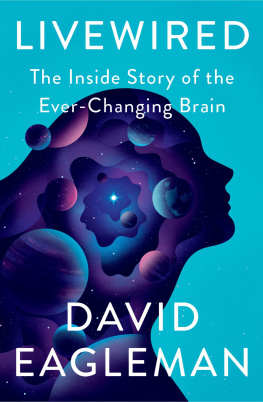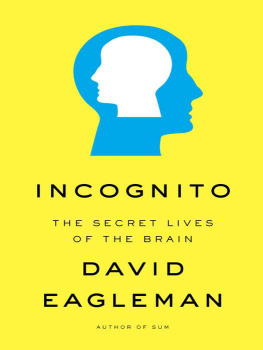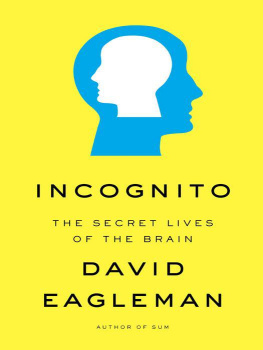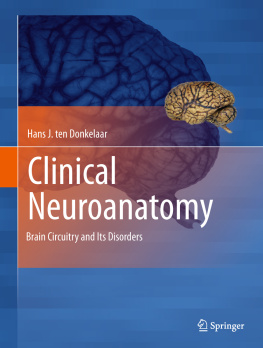David Eagleman - Livewired: How the Brain Rewrites Its Own Circuitry
Here you can read online David Eagleman - Livewired: How the Brain Rewrites Its Own Circuitry full text of the book (entire story) in english for free. Download pdf and epub, get meaning, cover and reviews about this ebook. year: 2020, publisher: Doubleday Canada, genre: Art. Description of the work, (preface) as well as reviews are available. Best literature library LitArk.com created for fans of good reading and offers a wide selection of genres:
Romance novel
Science fiction
Adventure
Detective
Science
History
Home and family
Prose
Art
Politics
Computer
Non-fiction
Religion
Business
Children
Humor
Choose a favorite category and find really read worthwhile books. Enjoy immersion in the world of imagination, feel the emotions of the characters or learn something new for yourself, make an fascinating discovery.
- Book:Livewired: How the Brain Rewrites Its Own Circuitry
- Author:
- Publisher:Doubleday Canada
- Genre:
- Year:2020
- Rating:5 / 5
- Favourites:Add to favourites
- Your mark:
- 100
- 1
- 2
- 3
- 4
- 5
Livewired: How the Brain Rewrites Its Own Circuitry: summary, description and annotation
We offer to read an annotation, description, summary or preface (depends on what the author of the book "Livewired: How the Brain Rewrites Its Own Circuitry" wrote himself). If you haven't found the necessary information about the book — write in the comments, we will try to find it.
Livewired: How the Brain Rewrites Its Own Circuitry — read online for free the complete book (whole text) full work
Below is the text of the book, divided by pages. System saving the place of the last page read, allows you to conveniently read the book "Livewired: How the Brain Rewrites Its Own Circuitry" online for free, without having to search again every time where you left off. Put a bookmark, and you can go to the page where you finished reading at any time.
Font size:
Interval:
Bookmark:
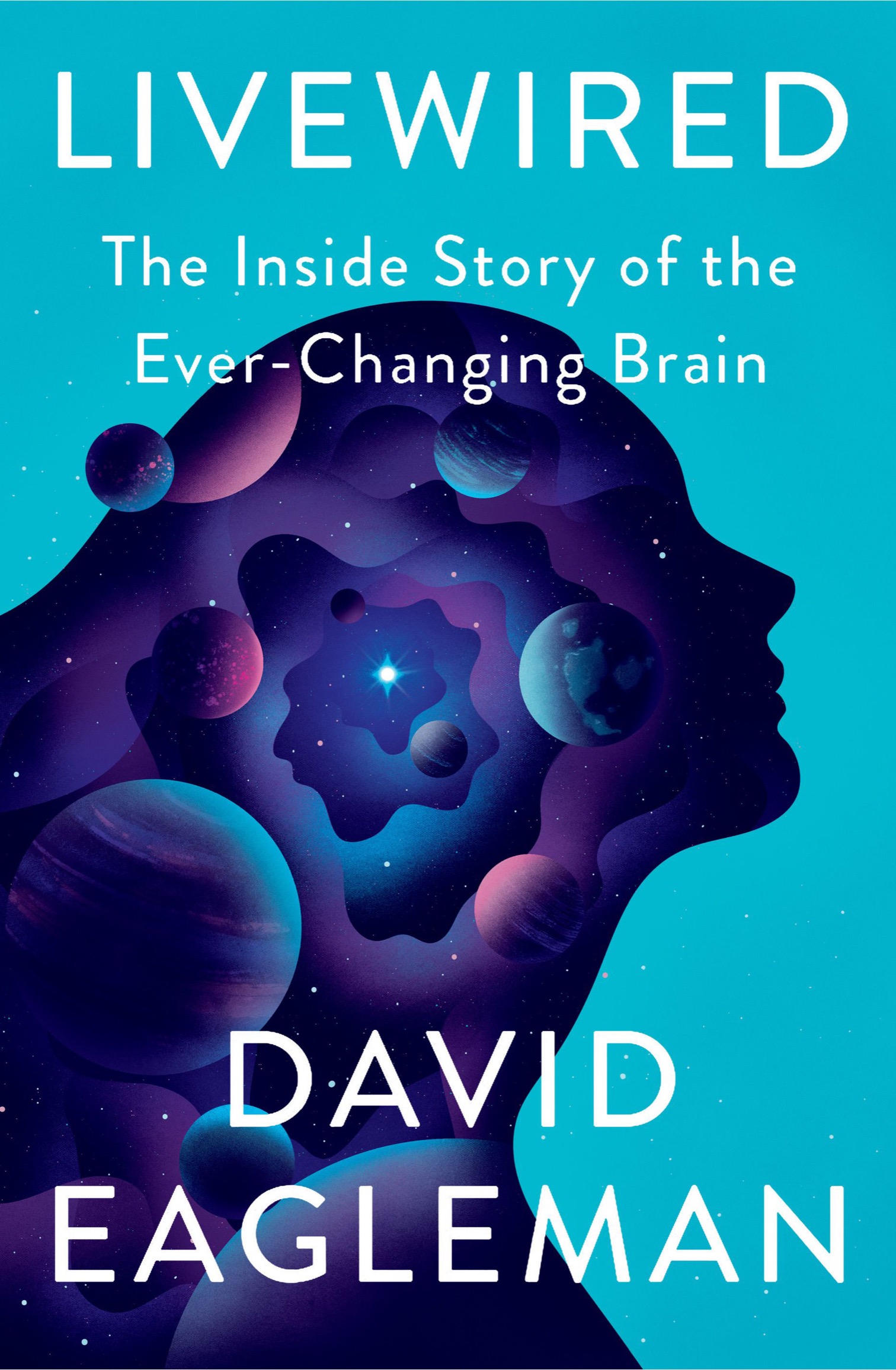
Sum
Incognito: The Secret Lives of the Brain
Why the Net Matters: Six Easy Ways to Avert the Collapse of Civilization
The Brain: The Story of You
Wednesday Is Indigo Blue: Discovering the Brain of Synesthesia
(with Richard Cytowic)
The Runaway Species
(with Anthony Brandt)
Brain and Behavior: A Cognitive Neuroscience Perspective
(with Jonathan Downar)
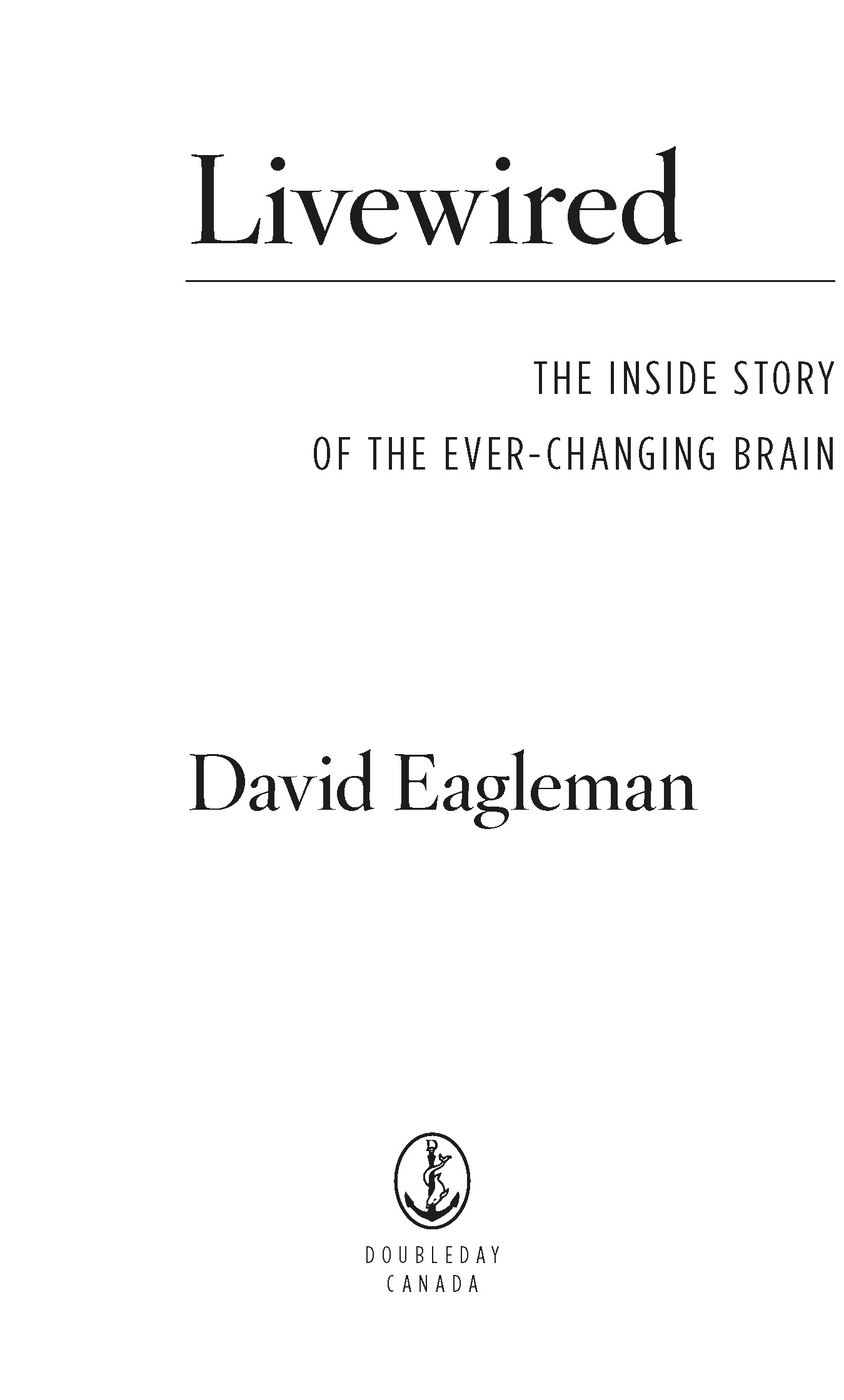
Copyright 2020 David Eagleman
All rights reserved. The use of any part of this publication, reproduced, transmitted in any form or by any means electronic, mechanical, photocopying, recording or otherwise, or stored in a retrieval system without the prior written consent of the publisheror in the case of photocopying or other reprographic copying, license from the Canadian Copyright Licensing Agencyis an infringement of the copyright law.
Doubleday Canada and colophon are registered trademarks of Penguin Random House Canada Limited
Library and Archives Canada Cataloguing in Publication
Title: Livewired / David Eagleman.
Names: Eagleman, David, author.
Identifiers: Canadiana (print) 20200210904 | Canadiana (ebook) 20200210912 | ISBN 9780385677301 (hardcover) | ISBN 9780385677318 (EPUB)
Subjects: LCSH: BrainPopular works. | LCSH: NeurosciencesPopular works.
Classification: LCC QP376 .E24 2020 | DDC 612.8/2dc23
Cover illustration by Jack Daly/Central Illustration Agency
Cover design by Emily Mahon
Published in Canada by Doubleday Canada,
a division of Penguin Random House Canada Limited
www.penguinrandomhouse.ca

ep_prh_5.5.0_c0_r0
The Child with Half a Brain Lifes Other Secret If Youre Missing the Tool, Create It An Ever-Changing System
How to Grow a Good Brain Experience Necessary Natures Great Gamble
The Case of the Silver Spring Monkeys The Afterlife of Lord Horatio Nelsons Right Arm Timing Is Everything Colonization Is a Full-Time Business The More the Better Blindingly Fast What Does Dreaming Have to Do with the Rotation of the Planet? As Outside, So Inside
The Planet-Winning Technology of the Potato Head Sensory Substitution The One-Trick Pony Eye Tunes Good Vibrations Enhancing the Peripherals Conjuring a New Sensorium Imagining a New Color Are You Ready for a New Sensation?
Will the Real Doc Ock Please Raise His Hands? No Standard Blueprints Motor Babbling The Motor Cortex, Marshmallows, and the Moon Self-Control Toys Are Us One Brain, Infinite Body Plans
The Motor Cortices of Perlman Versus Ashkenazy Fashioning the Landscape Dogged Allowing the Real Estate to Change The Brain of a Digital Native
A Horse in the River Making Invisible the Expected The Difference Between What You Thought Would Happen and What Actually Happened Going Toward the Light. Or Sugar. Or Data. Adjusting to Expect the Unexpected
When Haiti Disappears How to Spread Drug Dealers Evenly How Neurons Expand Their Social Network The Benefits of a Good Death Is Cancer an Expression of Plasticity Gone Awry? Saving the Brain Forest
Born as Many The Sensitive Period Doors Close at Different Rates Still Changing After All These Years
Talking to Your Future Self The Enemy of Memory Is Not Time; Its Other Memories Parts of the Brain Teach Other Parts Beyond Synapses Daisy-Chaining a Range of Timescales Many Kinds of Memory Modified by History
We Have Met the Shape-Shifters, and They Are Us
Every man is born as many men and dies as a single one.
MARTIN HEIDEGGER
Imagine this: instead of sending a four-hundred-pound rover vehicle to Mars, we merely shoot over to the planet a single sphere, one that can fit on the end of a pin. Using energy from sources around it, the sphere divides itself into a diversified army of similar spheres. The spheres hang on to each other and sprout features: wheels, lenses, temperature sensors, and a full internal guidance system. Youd be gobsmacked to watch such a system discharge itself.
But you only need to go to any nursery to see this unpacking in action. Youll see wailing babies who began as a single, microscopic, fertilized egg and are now in the process of emancipating themselves into enormous humans, replete with photon detectors, multi-jointed appendages, pressure sensors, blood pumps, and machinery for metabolizing power from all around them.
But this isnt even the best part about humans; theres something more astonishing. Our machinery isnt fully preprogrammed, but instead shapes itself by interacting with the world. As we grow, we constantly rewrite our brains circuitry to tackle challenges, leverage opportunities, and understand the social structures around us.
Our species has successfully taken over every corner of the globe because we represent the highest expression of a trick that Mother Nature discovered: dont entirely pre-script the brain; instead, just set it up with the basic building blocks and get it into the world. The bawling baby eventually stops crying, looks around, and absorbs the world around it. It molds itself to the surroundings. It soaks up everything from local language to broader culture to global politics. It carries forward the beliefs and biases of those who raise it. Every fond memory it possesses, every lesson it learns, every drop of information it drinksall these fashion its circuits to develop something that was never pre-planned, but instead reflects the world around it.
This book will show how our brains incessantly reconfigure their own wiring, and what that means for our lives and our futures. Along the way, well find our story illuminated by many questions: Why did people in the 1980s (and only in the 1980s) see book pages as slightly red? Why is the worlds best archer armless? Why do we dream each night, and what does that have to do with the rotation of the planet? What does drug withdrawal have in common with a broken heart? Why is the enemy of memory not time but other memories? How can a blind person learn to see with her tongue or a deaf person learn to hear with his skin? Might we someday be able to read the rough details of someones life from the microscopic structure etched in their forest of brain cells?
While Valerie S. was getting ready for work, her three-year-old son, Matthew, collapsed on the floor. He was unarousable. His lips turned blue.
Valerie called her husband in a panic. Why are you calling me? he bellowed. Call the doctor!
A trip to the emergency room was followed by a long aftermath of appointments. The pediatrician recommended Matthew have his heart checked. The cardiologist outfitted him with a heart monitor, which Matthew kept unplugging. All the visits surfaced nothing in particular. The scare was a one-off event.
Or so they thought. A month later, while he was eating, Matthews face took on a strange expression. His eyes became intense, his right arm stiffened and straightened up above his head, and he remained unresponsive for about a minute. Again Valerie rushed him to the doctors; again there was no clear diagnosis.
Font size:
Interval:
Bookmark:
Similar books «Livewired: How the Brain Rewrites Its Own Circuitry»
Look at similar books to Livewired: How the Brain Rewrites Its Own Circuitry. We have selected literature similar in name and meaning in the hope of providing readers with more options to find new, interesting, not yet read works.
Discussion, reviews of the book Livewired: How the Brain Rewrites Its Own Circuitry and just readers' own opinions. Leave your comments, write what you think about the work, its meaning or the main characters. Specify what exactly you liked and what you didn't like, and why you think so.

